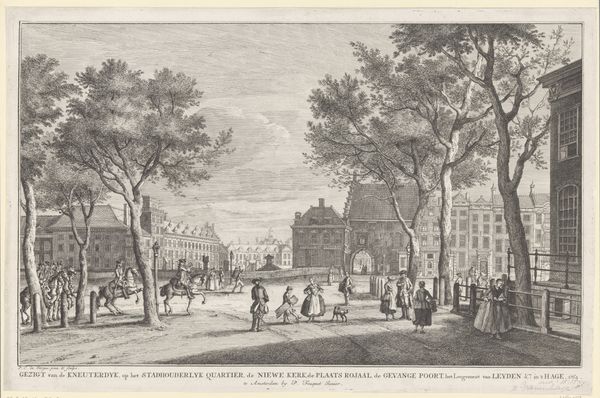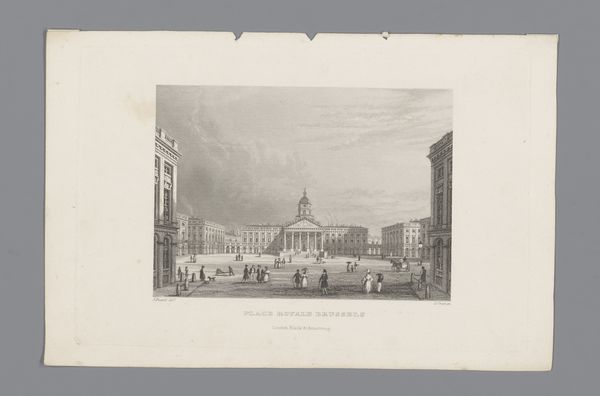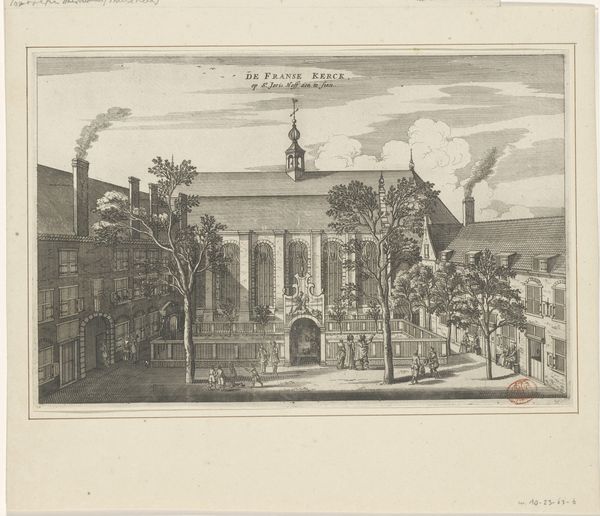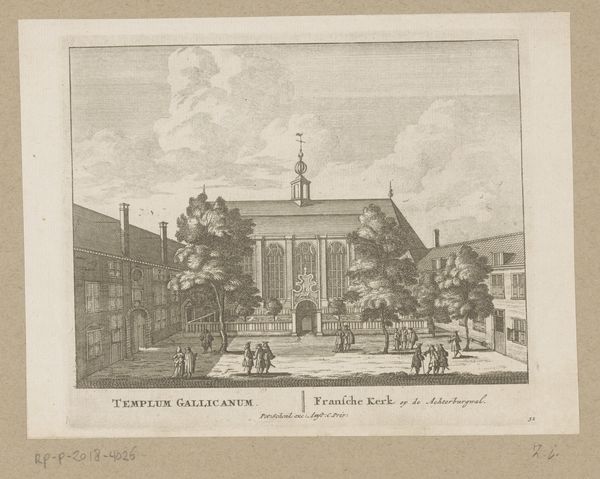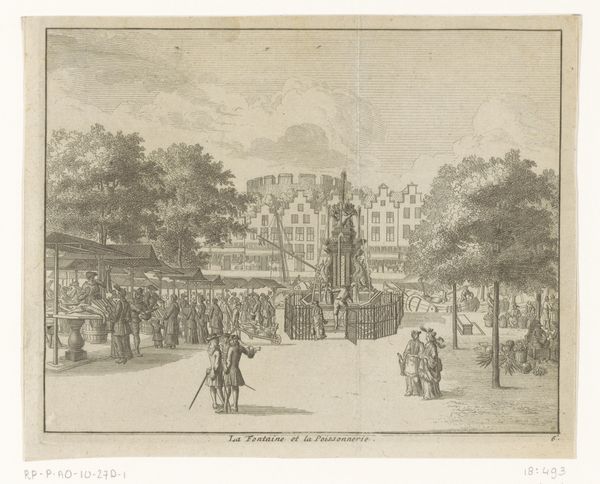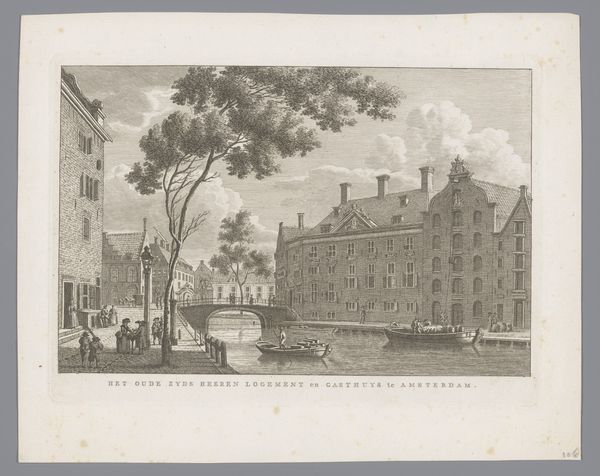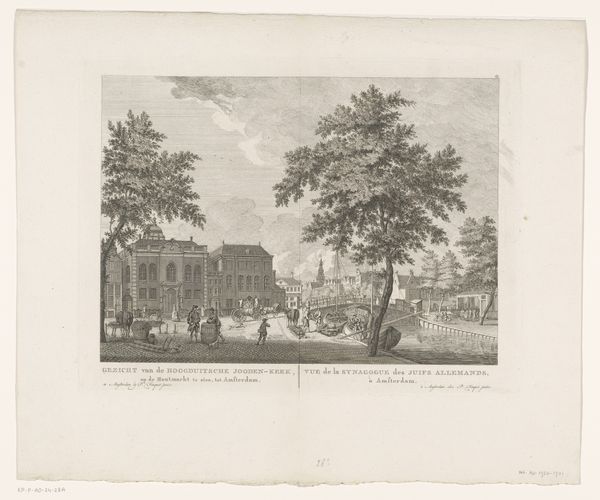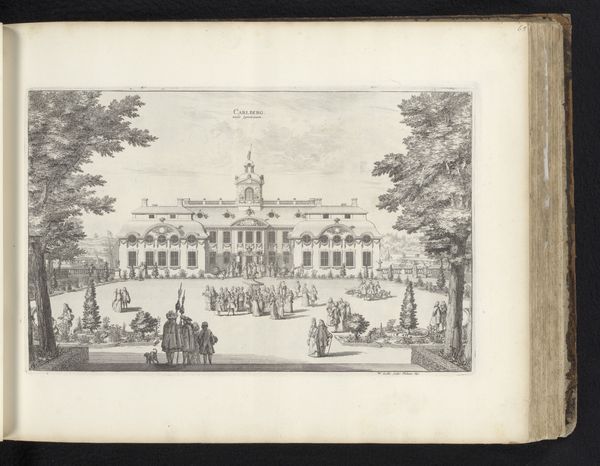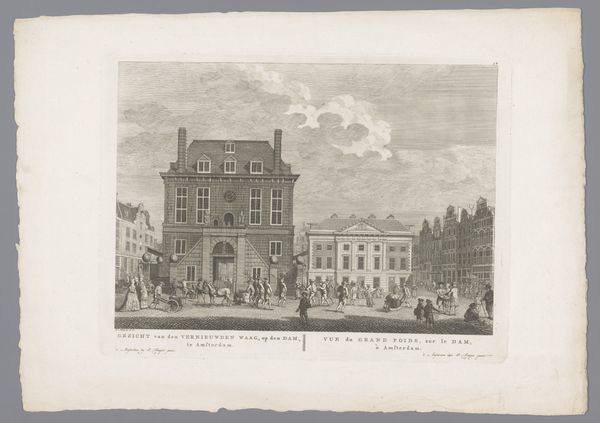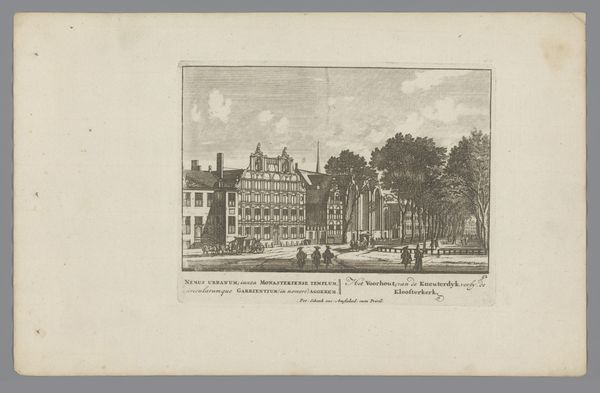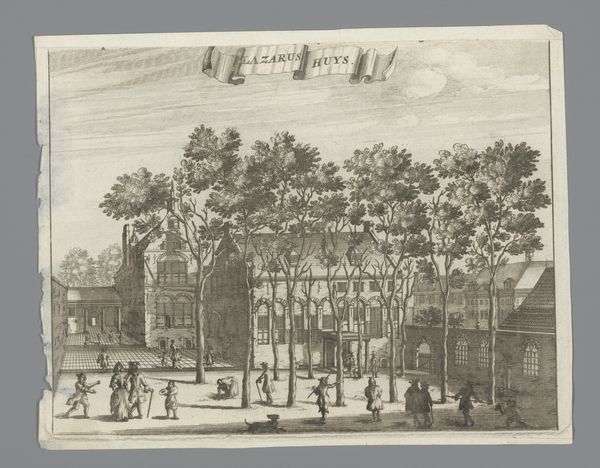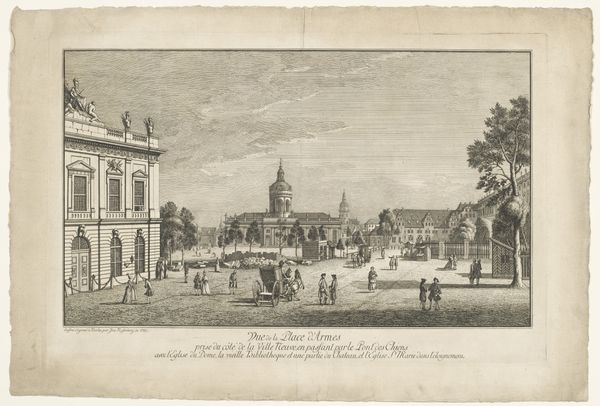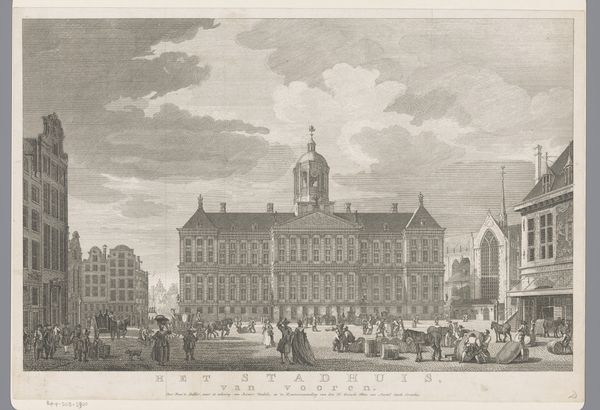
print, engraving
#
neoclacissism
# print
#
cityscape
#
engraving
Dimensions: height 174 mm, width 238 mm
Copyright: Rijks Museum: Open Domain
Editor: So, here we have “Gezicht op het Stadhuis in Goes,” or “View of the Town Hall in Goes,” made sometime between 1786 and 1792 by Carel Frederik Bendorp. It’s an engraving, which is a type of print. It seems to depict everyday life around the town hall. What’s your take on this piece? Curator: I'm drawn to how the very process of creating this engraving reveals the social context of its time. Think about the labor involved in producing this image. The engraver meticulously carved the image into a metal plate, a highly skilled craft in the late 18th century. This process allowed for mass production, making the image accessible to a wider audience beyond the elite. Editor: So you're focusing on the means of production, rather than the image itself? Curator: Not entirely, but the materiality and distribution are crucial. Consider the function of prints like this. They served as visual records, documenting cityscapes and civic structures, contributing to a growing sense of national identity. The act of replicating and consuming such images reflected and reinforced prevailing social and political values. How does that change how you view the buildings and the people in it? Editor: I guess I was mostly just appreciating the scene, but now I'm thinking about who could afford to own this print, and what statements it made. Were these kinds of prints common? Curator: Common enough to establish a market for them. The efficiency of printmaking allowed images like this to circulate and contribute to a shared visual culture, a collective understanding of urban life and civic pride. It prompts us to consider the role of art in shaping social consciousness through material means. Editor: That's fascinating. It definitely gives me a new perspective on how art can reflect and even shape society through its materials and distribution. Thanks! Curator: Absolutely. Looking at the process illuminates a different facet of art history, one deeply connected to labor, materials, and social dynamics.
Comments
No comments
Be the first to comment and join the conversation on the ultimate creative platform.

